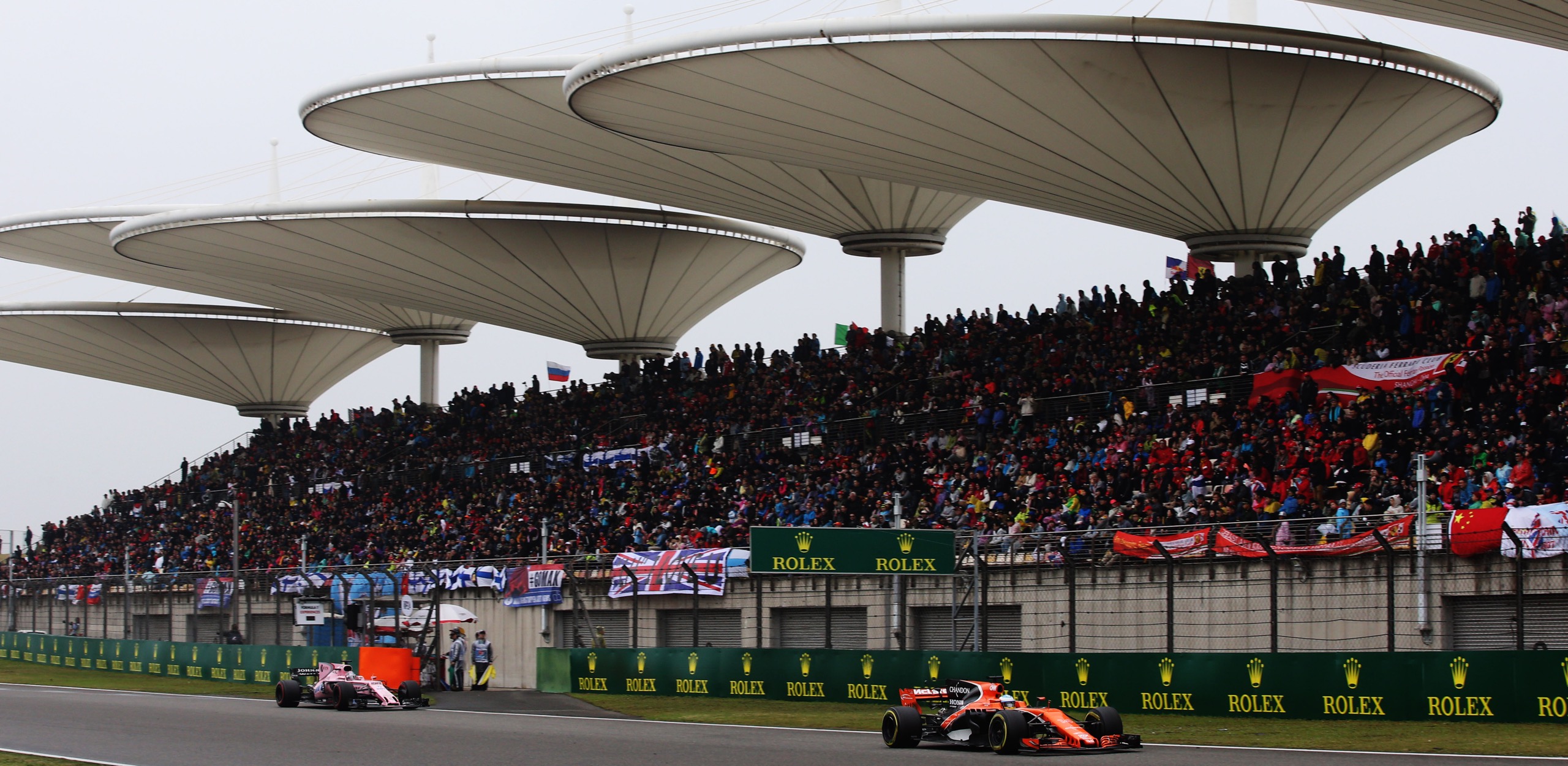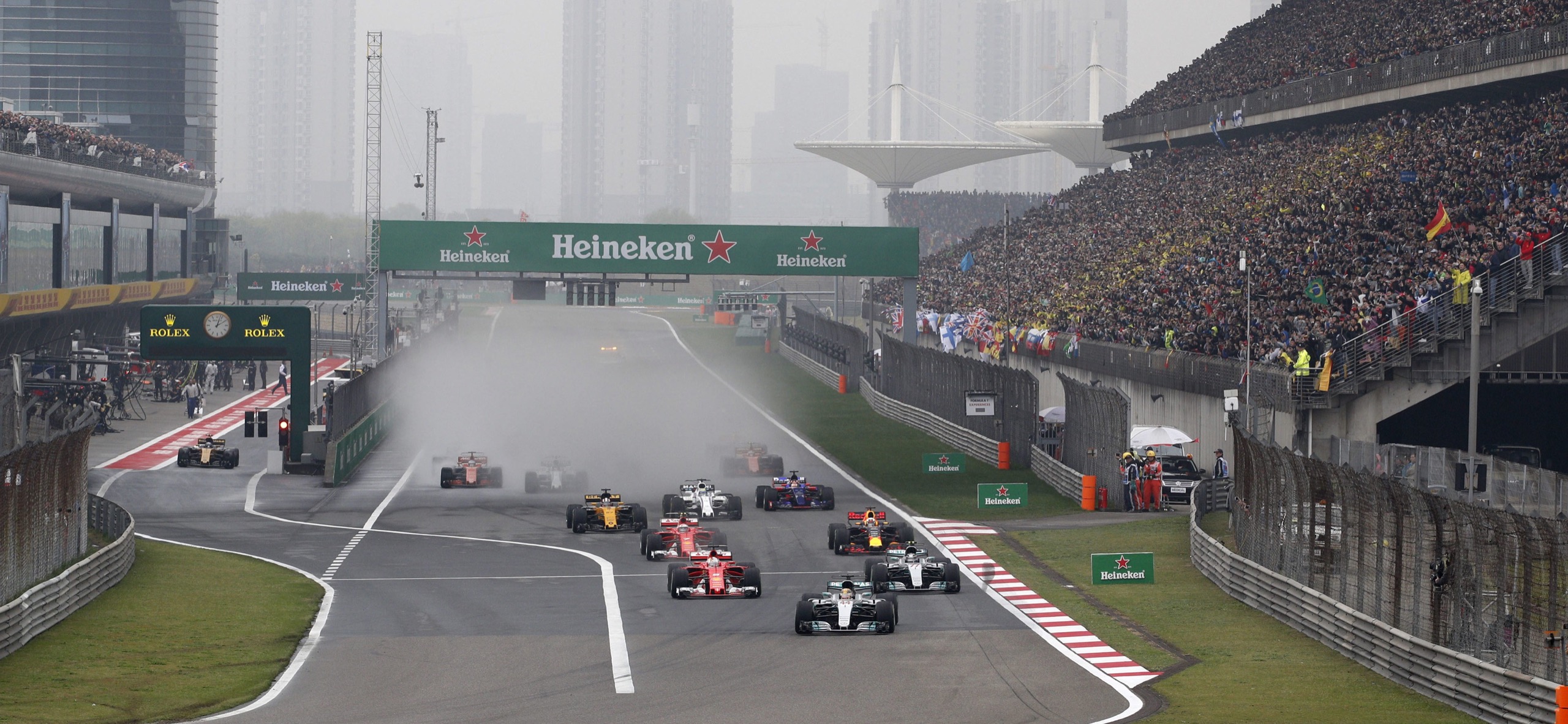
Contemporary Formula 1 is beyond data-centric; there is no such thing as old-school seat-of-the-pants tuning. If a car setup isn’t proven by a testing algorithm, it isn’t even considered. So when cold rain and dense fog arrived for the 2017 Chinese Grand Prix weekend, managing to spoil FP1 and cancelling FP2, the entire F1 circus was left deep in uncharted territory. Their new-for-2017 cars had contested the Australian GP two weeks ago, but they went into the first battle of the season supported by only eight days of pre-season testing and thus, massively untapped question marks. Even with the data gleaned from the Grand Prix, there were plenty of holes in the race setup logs remaining unfilled when they arrived in Shanghai. FP3 became an impromptu tire wear test session and Qualifying, though dry, forced a best case situation on engineers who view the word “guess” as blasphemy.
Luckily for fans, Shanghai’s necessary try-it-and-see qualifying session produced a fantastic combination of surprise, disappointment and record setting speed. Lewis Hamilton claimed pole position for Mercedes to line up ahead of Ferrari’s Sebastian Vettel, who kept Valtteri Bottas from giving Mercedes a front row lockout by just 0.001s translating to a separation of just 5.91cm between their two cars over a lap of Shanghai.
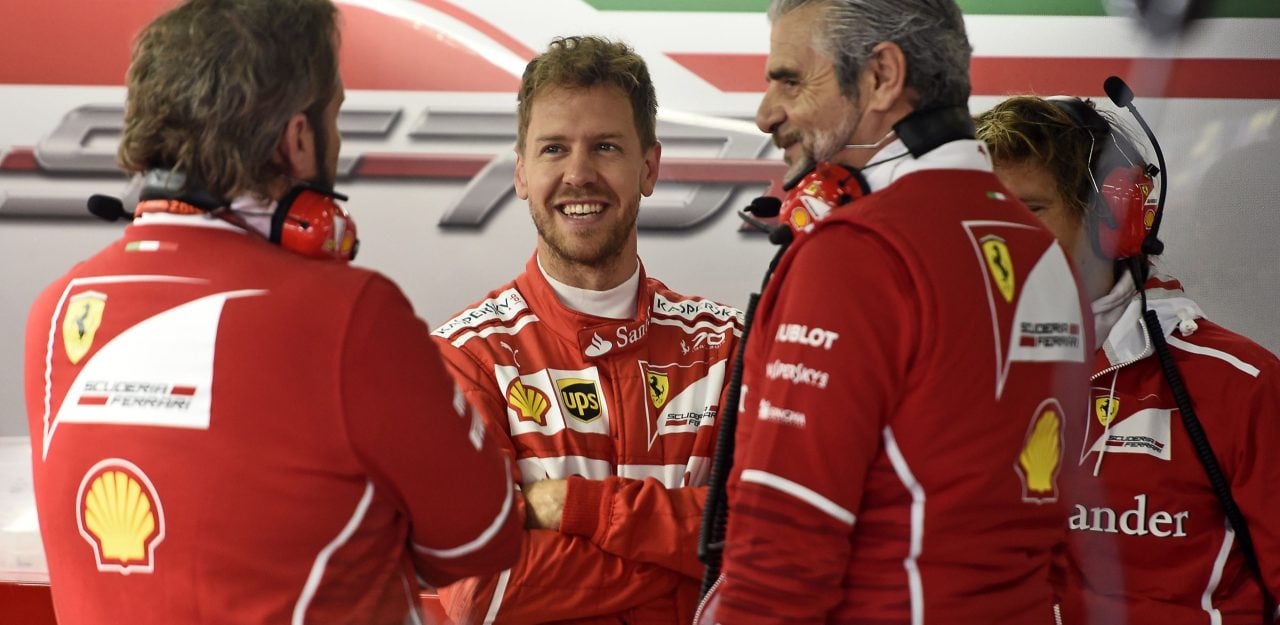
Hamilton’s time was 4.1 secs faster than the 2015 pole position time yet his lap of 1m31.678s was just 0.186s over Vettel. With a different driver fastest in each of the three sectors, Sunday’s Grand Prix looked to be surprisingly open for victory for not only Hamilton and Vettel but teammates Bottas and Raikkonen respectively.
Red Bull’s Daniel Ricciardo qualified fifth, 1.355s off pole position and complained of the same problems he faced in Australia – understeer, anaemic power and a lack of overall downforce. Meanwhile, teammate Max Verstappen experienced a nightmare. The Red Bull driver’s engine had a misfiring ignition coil spoiling his first attempt in Q1 and then didn’t have enough power to set a competitive Q2 time leaving him only 19th fastest, 3.755s off Hamiton’s pole position. Penalties to Jolyon Palmer and Romain Grosjean moved him up two places. He would go to sleep that evening praying for rain. He would get his wish.
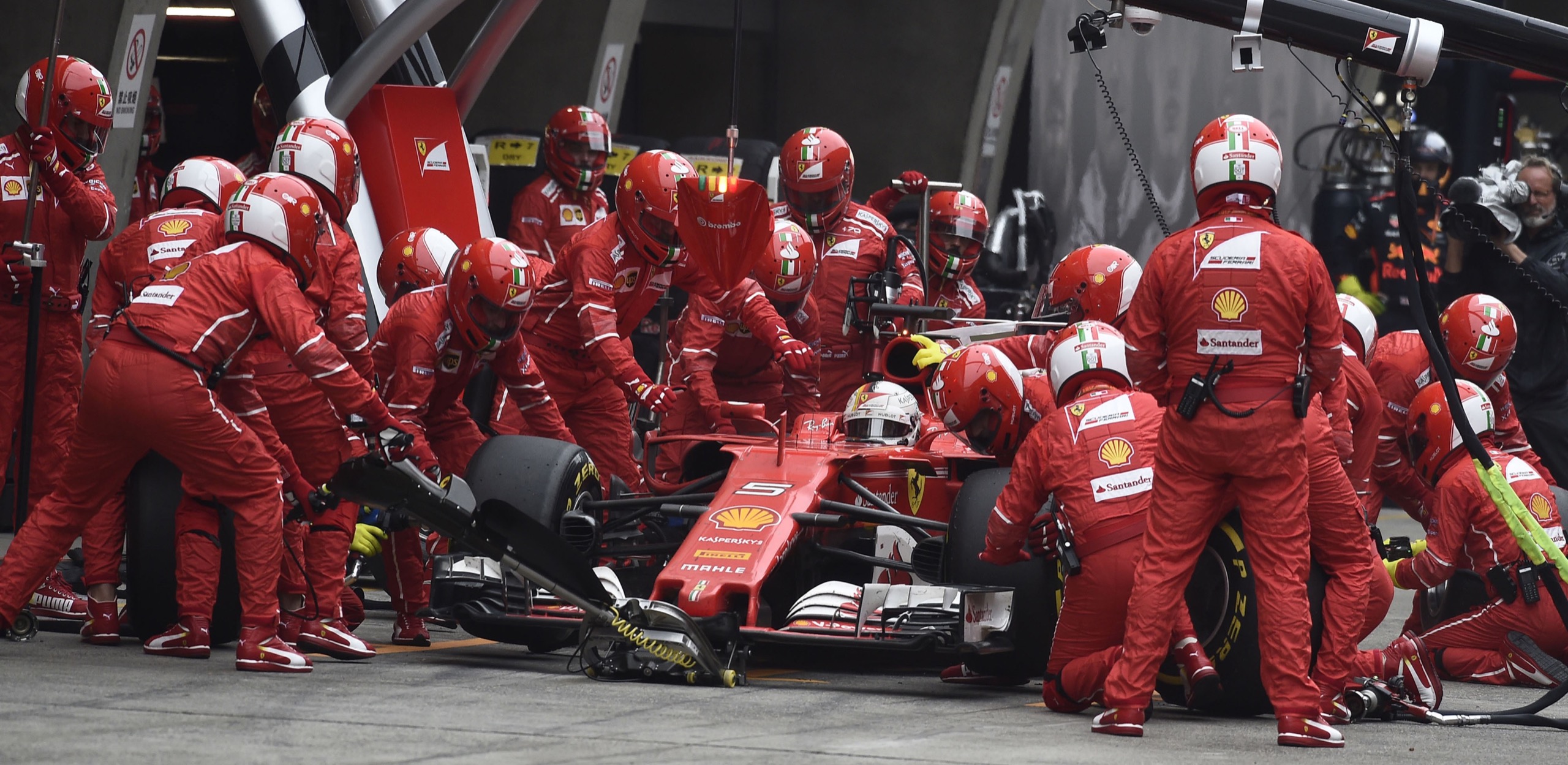
Every car except Carlos Sainz’s Toro Rosso that took their positions for the start was fitted with intermediate rain tyres. It was a difficult decision for the Spaniard to stand behind, but he had seen the track rapidly drying on his reconnaissance laps and felt it would only be a few laps before the intermediates would degrade, forcing a change. If he were correct, he would gain positions in the shuffle. It was also notable that as Vettel took his grid position, he had moved his car toward the centre of the track a bit outside the markings. As several team managers pointed and complained, the stewards shrugged.
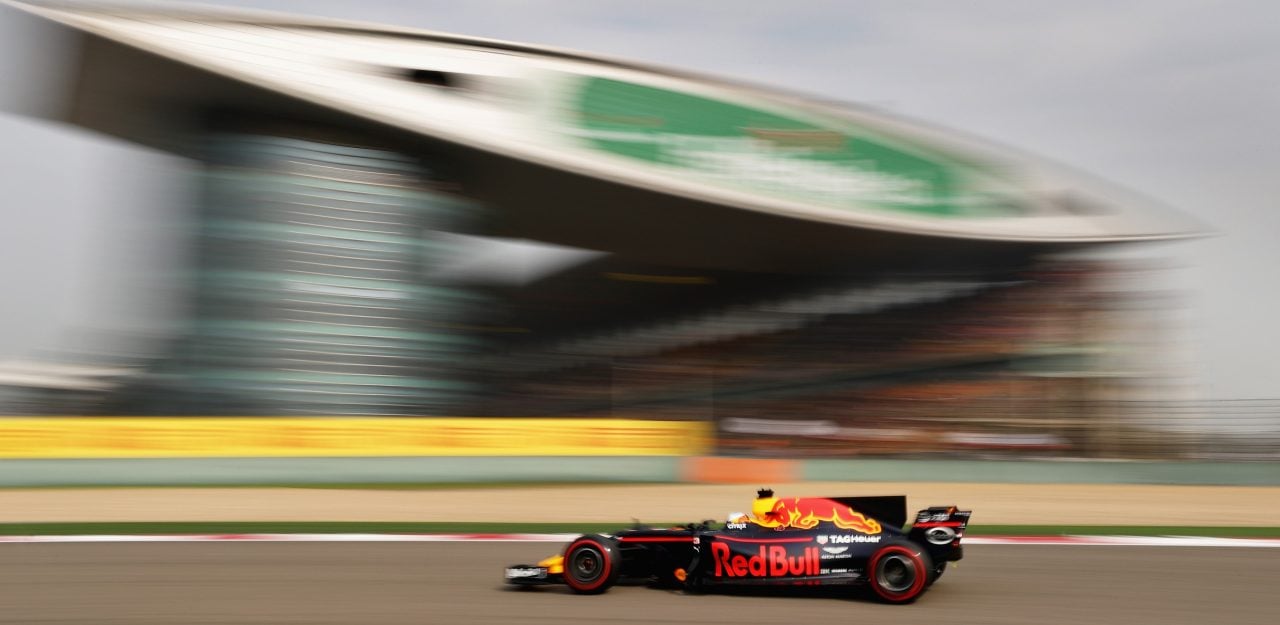
As the lights went out, Hamilton had the least wheel spin, leading Vettel, Bottas, Ricciardo and then Kimi Raikkonen toward the first turn. By the time Hamilton hit the apex, Max Verstappen’s Red Bull was in seventh, having found miraculous room in the centre of the track and then on the outside to pass nine cars. No sooner had the queue reached Turn 10 than Sergio Perez’s Force India speared Lance Stroll’s Williams’ breaking the suspension, triggering the Virtual Safety Car at the start of the second lap. Just as Sainz had foretold, a majority of drivers ran for the pits for an early change to soft slicks. Sebastian Vettel was one of them, deciding to give up second place, trusting that Hamilton would soon have to also trade in his intermediates for softs. Hamilton along with teammate Valtteri Bottas, Red Bull’s Daniel Ricciardo, Ferrari’s Kimi Raikkonen and the flying Verstappen stayed out.
Vettel’s gamble would have probably put him in the lead if it were not for Antonio Giovinazzi. To Vettel’s dismay, just as the VSC period ended, the Sauber reserve driver once again lost his car coming onto the pit straight and crashed heavily for the second time in two days. His C36 snapped sideways on the newly paved and still-wet tarmac and slammed the pit wall. This time the cumulative debris needed full Safety Car intervention. As the marshals retrieved the crushed Sauber, the field had to use the pit lane, and the remaining runners switched to slicks – both Mercedes teammates chose softs as did Raikkonen, with Red Bull opting for the super-softs.
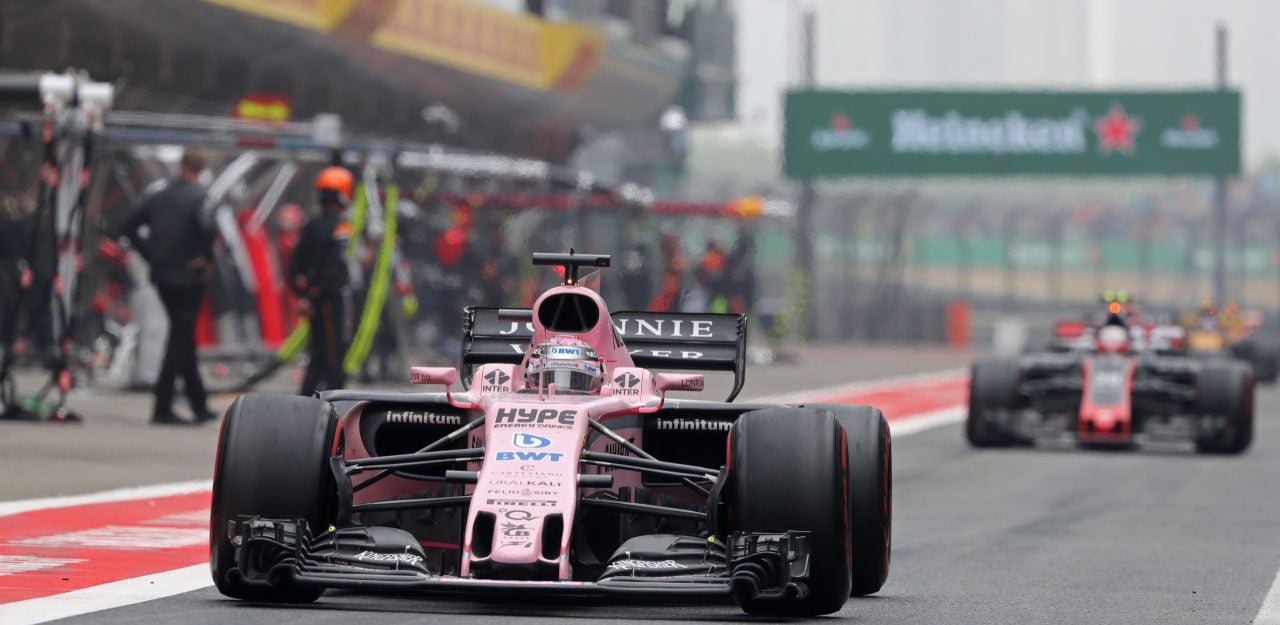
Having already changed tires during the full race speed second lap, Vettel now lost out timing wise as the Safety Car slowed the field. He dropped from second to sixth. He regained one of those places when Bottas was too aggressive attempting to keep heat in his tires before the restart and abruptly spun while trailing the Safety Car.
When the Safety Car pitted, Hamilton pulled out to a three-second lead, with Ricciardo complaining of extreme understeer as he held up Verstappen and Ferrari’s duo. Verstappen waited for a few perfunctory laps before slicing up the inside of Ricciardo with a late-late braking pass at Turn 6. In a moment he was gone, now off to try and catch Hamilton. Ricciardo continued to hold up his Ferrari pursuers for nearly ten more laps until Vettel reprised Verstappen’s move again at Turn 6 to drop Raikkonen and then Ricciardo two laps later at the same corner. In what was simply pure class, Vettel and his old teammate Ricciardo cleanly banged wheels repeatedly going into and out of the high-speed Turn 7. Rather than wreck, Ricciardo ceded Vettel the position. Vettel then took off after Verstappen. He caught him on lap 28 when the Dutchman locked his wheels protecting his position at the Turn 14.
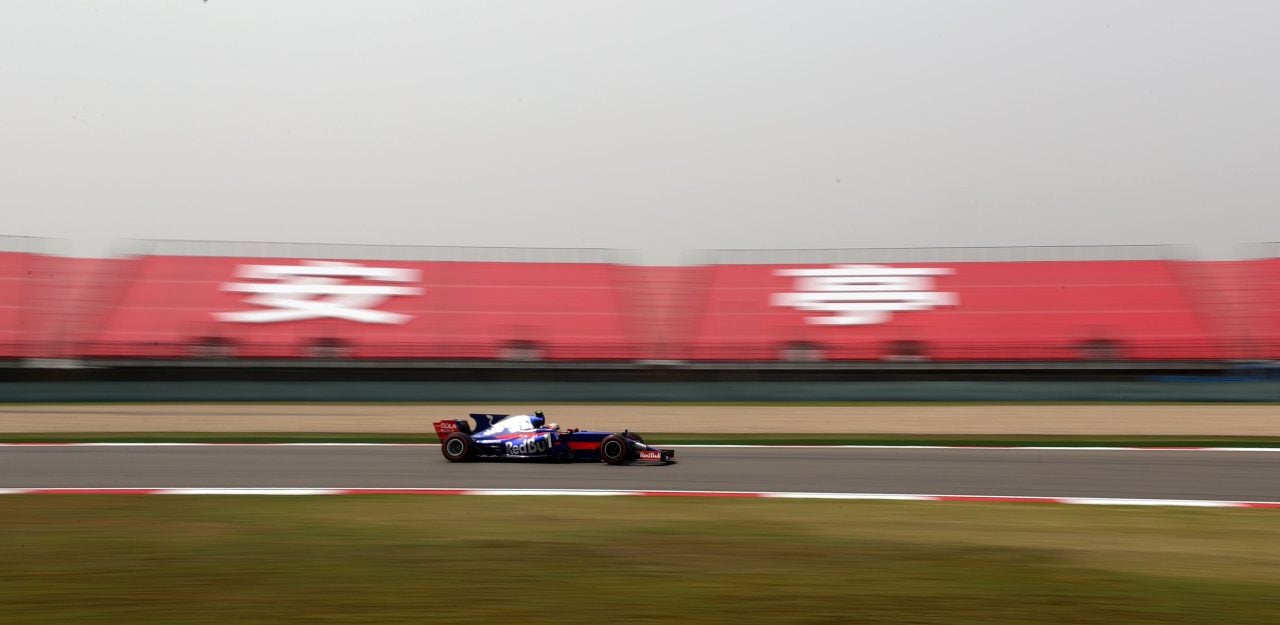
Verstappen was forced to pit two laps later for a fresh set of supersofts, his first set being victims of flat spots courtesy of the Vettel pass lock-up. He significantly picked up his pace on the new rubber, forcing second stops for Riccardo on lap 33, Vettel on lap 34 and finally Hamilton two laps later. Amazingly, Raikkonen wasn’t part of this cycle; he had been complaining his tires were finished while Ferrari was keeping him out as a bet Raikkonen could make it to the finish (and pick up positions) by running on just one set. By lap 39, Raikkonen had suffered enough and Ferrari relented. He took on fresh tyres and eventually finished fifth.
Vettel began to close on Hamilton, but the leader had him covered with the gap staying at 6.2 seconds. Behind this pair, Verstappen came under attack from Ricciardo, his car rejuvenated with a fresh set of tyres back on lap 33. Ricciardo would close on Verstappen only to come up a few yards short in the passing zones. Verstappen would then rocket off the corners, and his dance with his teammate would start again. On the final lap, Ricciardo threw everything he had left at Verstappen in both Turns 6 and 14, but Verstappen had him covered. Following Hamilton, Vettel, Verstappen, Ricciardo and Raikkonen was Bottas who recovered from the early spin to finish sixth followed by the under-engined-but-clairvoyant Carlos Sainz, Kevin Magnussen with his first points for Haas, and the Force India duo of Sergio Perez and Esteban Ocon, for their second points finishes in as many races.
Fernando made a text-book start in the woe-begotten McLaren Honda and rose as high as sixth after starting 13th, but his “cowboying” the underpowered Honda came to nought when his Honda’s driveshaft failed as he fought for position with Sainz.
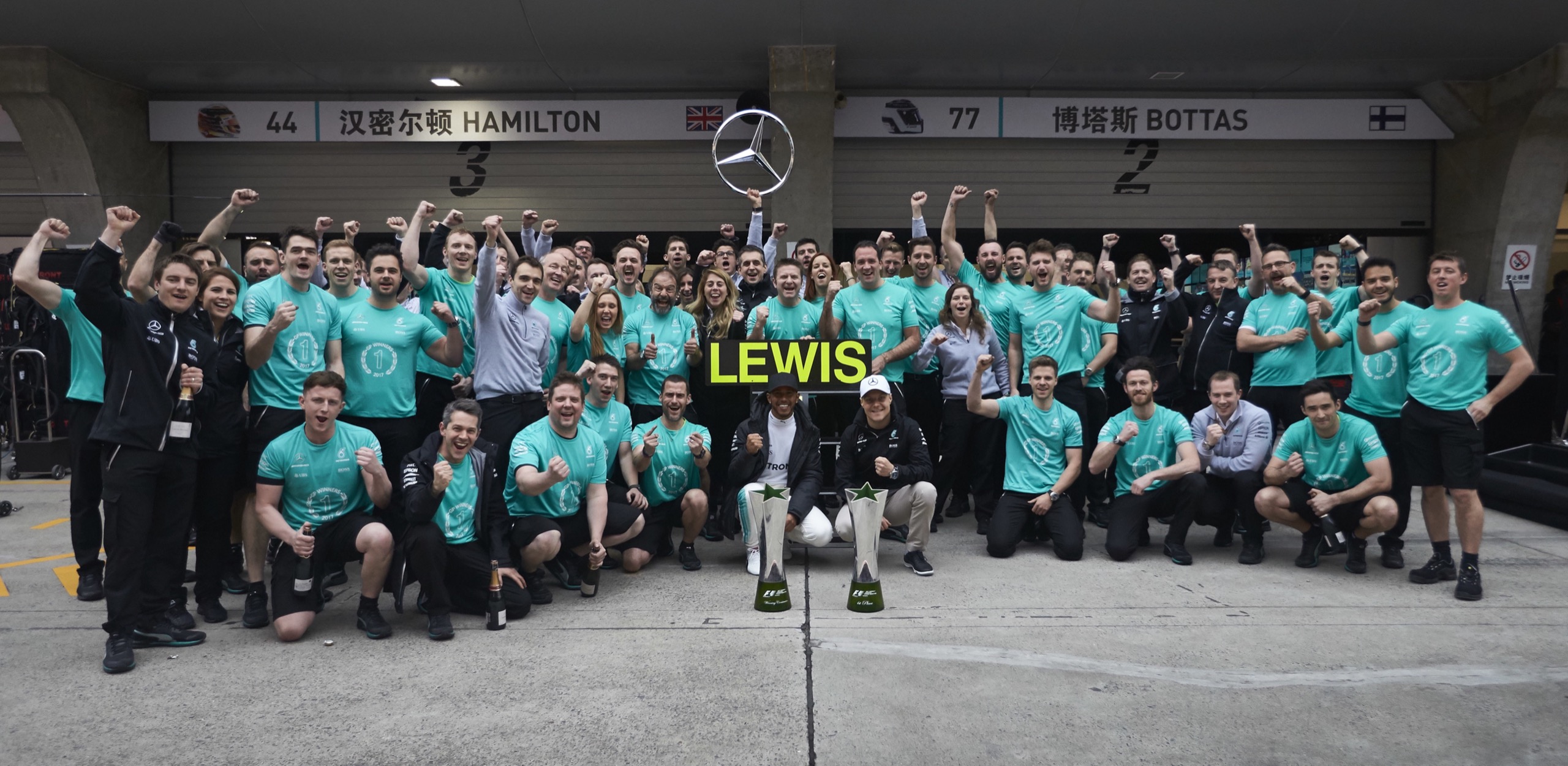
Max Verstappen made up ten positions on the opening lap when the whole pack (bar Carlos Sainz) were on intermediates. He looked like he was on an entirely different track, carving through the field with apparent ease. His threading-the-needle first lap showed just how supremely confident he is in damp conditions.
Sainz initially doubted his decision to be the sole driver to start on dry tires in the wet.
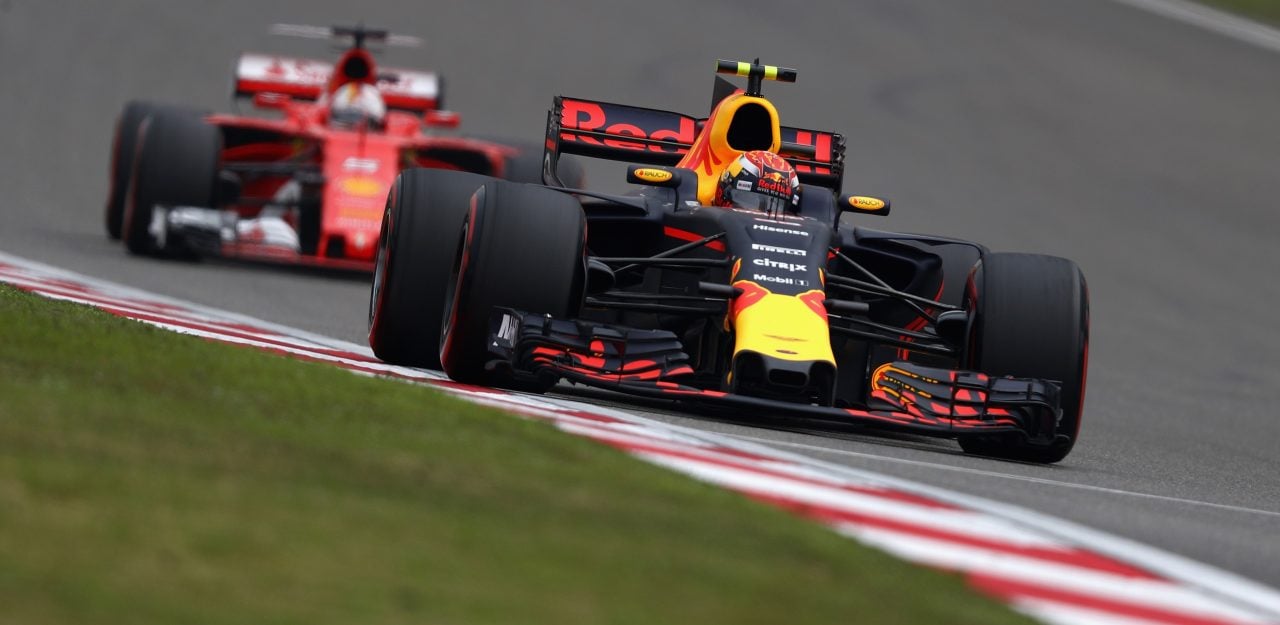
In his words; ”But I then said to myself, c’mon trust yourself, it’s the right thing to do! I knew the start and the first four corners were going to be very tricky — and they certainly were! — but from Turn 6 onwards the track was fully dry and I felt confident — the gamble definitely paid off! After the Safety Car, I saw myself catching Ferrari, Red Bull and Mercedes in front and I got super excited! It was just an incredible race, I felt so comfortable in the car today and to finally cross the line in P7 is a great result — I’d like to thank the team for the whole weekend, we can all be very happy!”
“That was a very special race. When I woke up this morning I never expected to be on the podium. It was a very good first lap, I passed nine cars I think which is very positive. The conditions really helped me get past the cars as quick as I could, that was important as I knew it would only dry up and get tougher to pass. I always enjoy driving in the wet so I made the most of the fun conditions early on.”
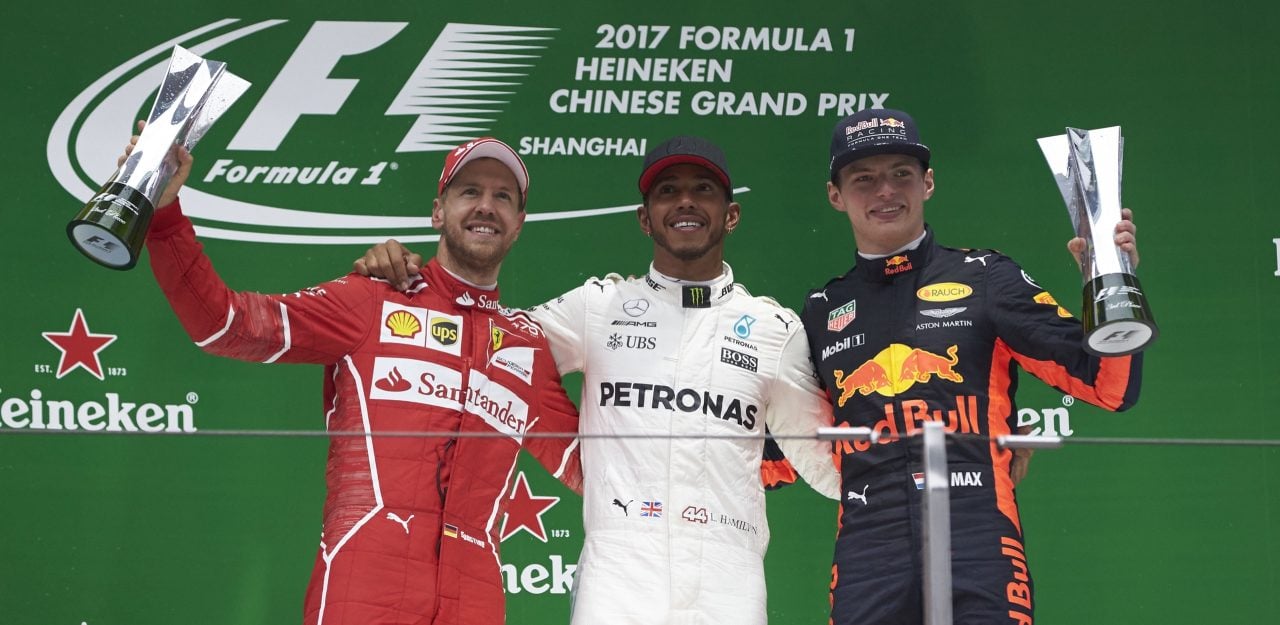
Maurizio Arrivabene, Ferrari Team Principal didn’t mention Kimi Raikkonen’s name once in the official team quote following the race. It was noted, however that Ferrari president Sergio Marchionne wants the team to sit down for talks with Raikkonen after the Finn’s second consecutive difficult race in the Chinese Grand Prix. Marchionne expressed some frustration with Raikkonen’s failure to get past Daniel Ricciardo in the early stages of the race, at a time when Vettel was also behind him.
The Driver’s Championship is now tied between Sebastian Vettel and Lewis Hamilton. Ferrari already senses a weakness in Bottas and needs every point from Raikkonen right now to bolster Vettel and strengthen the Scuderia’s run for the Constructor’s title.
It’s now on to the Grand Prix of Bahrain, April 16.
